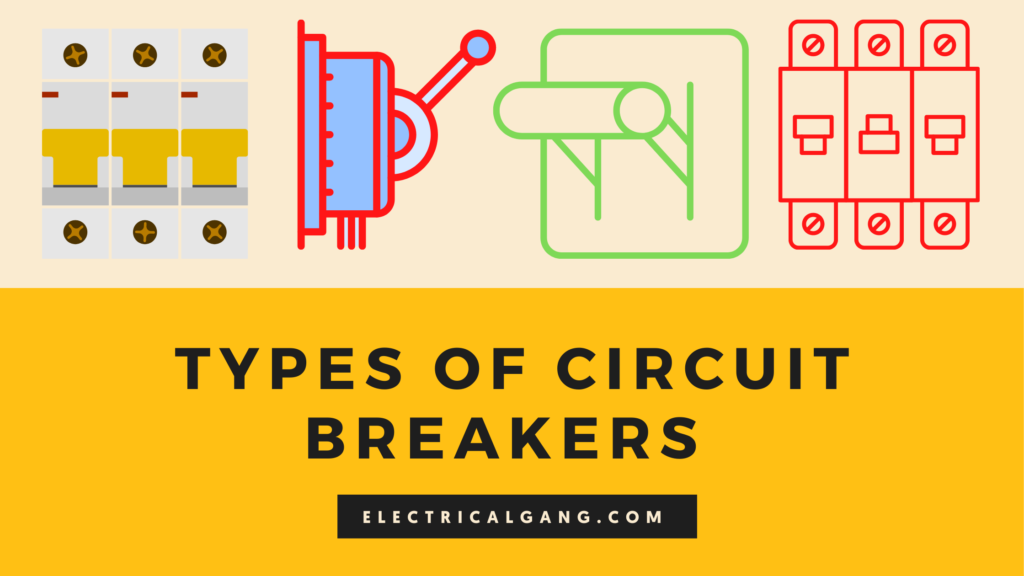
Circuit breakers are very important in electrical and electronics. Circuit breakers are used to prevent heavy damage to buildings, offices, buildings, schools, industries, etc. After the installation of the circuit breaker, it is easy to prevent the current from overheating. The damage can be prevented.
Circuit breakers work like a heart in an electrical system. Different types of circuit breakers are used for home and industry businesses. In today’s article, we will look at what a circuit breaker is, how many types of circuit breakers there are, and its various advantages and disadvantages.
What is a Circuit Breaker?
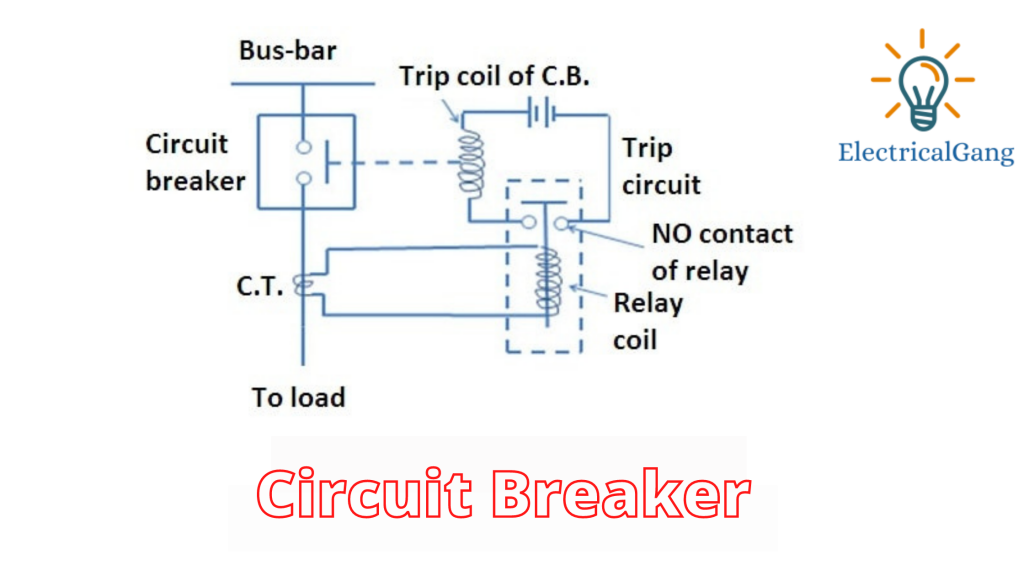
A circuit breaker is a type of switch used to protect and control an electrical system. In a sophisticated power system, the Circuit Breaker is designed for large currents that have been modified to avoid arc while operating. Electricity distribution comes from the power plant to the big grid station and from there to our home or office etc. which forms a very large circuit.
The lines that are connected to the power plant formed at one end are called hot wires and the other line connects to the ground which forms the other end. When an electric charge flows between two lines it develops potential between them. For a complete circuit, the connection of loads (devices) resists the flow of charge
And because of this, the whole electrical system works easily inside and outside the house. It works smoothly as long as there is a sufficient amount of resistance in any device. The heating of the wire in the device can cause a short circuit which can lead to a fire in such a situation that a circuit breaker is used to prevent it. Which prevents a major disaster like fire and cuts off this circuit.
Suggested Read : Toshiba Fire TV Remote Not Working? | Fix in Easy Methods
Types of Circuit Breakers:
The types of circuit breakers are as follows:
| Sr. No. | Types of Circuit Breakers |
| #1. | Air Circuit Breaker |
| #2. | Vacuum Circuit Breaker |
| #3. | Oil Circuit Breaker |
| #4. | SF6 Circuit Breaker |

#1. Air Circuit Breaker:
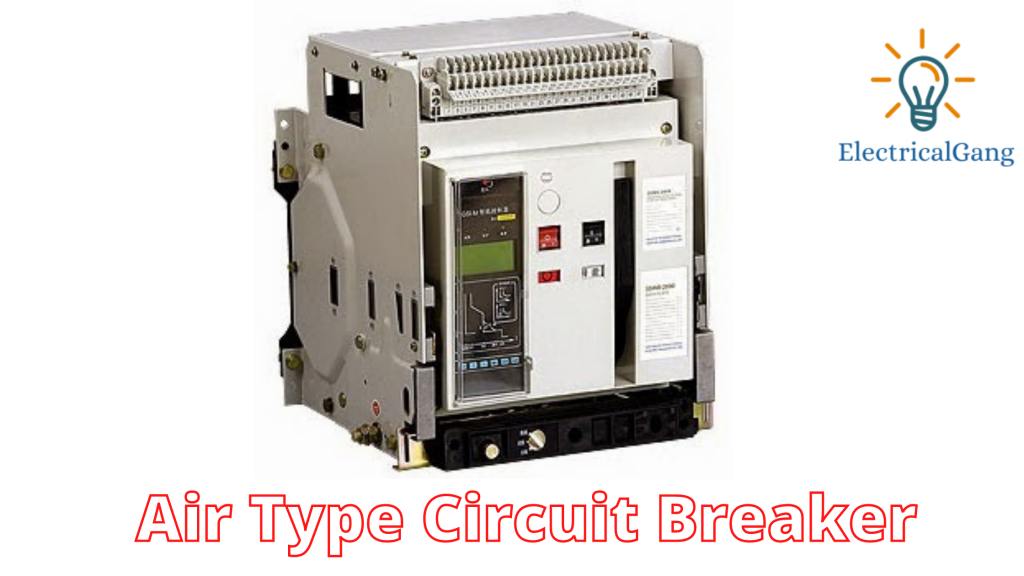
The air circuit breaker operates in the air. The quenching medium is an arc of atmospheric pressure. In other countries, oil circuit breakers are used instead of air circuit breakers. Because air circuit breakers are used up to 15KV; The oil circuit breaker can catch fire when used at 15V.
There are two types of air circuit breakers which are as follows:
#1. Plain Air Circuit Breaker.
#2. Airblast Circuit Breaker.
#1.1. Plain Air Circuit Breaker:
Plain Air Circuit Breaker is also known as a cross-blast circuit breaker. This circuit breaker consists of a chamber located on the opposite side of the contact. This chamber is known as the Arch Cute. The arc is designed to carry a cute arc. An arc cute helps to achieve cooling of the air circuit breaker. Which is made from refractory material.
The inner walls of the arch chute are shaped so that the arc is not brought close. It carries to the approximate winding channel on the arc chute wall. The arch cute consists of many small parts with many sections which are metal split plates.
Each small section behaves like a mini-arc coating that acts as a metal split plate. When the arc is divided into a series of arcs, all arc voltages will be higher than the system voltage. Plain Air Circuit Breaker is better for low voltage application
#1.2. Airblast Circuit Breaker:
Air Blast Circuit Breaker is used up to 245 kV, 420 kV.
There are two main types of Air Blast Circuit Breaker which are as follows:
#1. Axial Blast Breaker.
#2. Axial blast with sliding moving contact.
#1. Axial Blast Breaker:
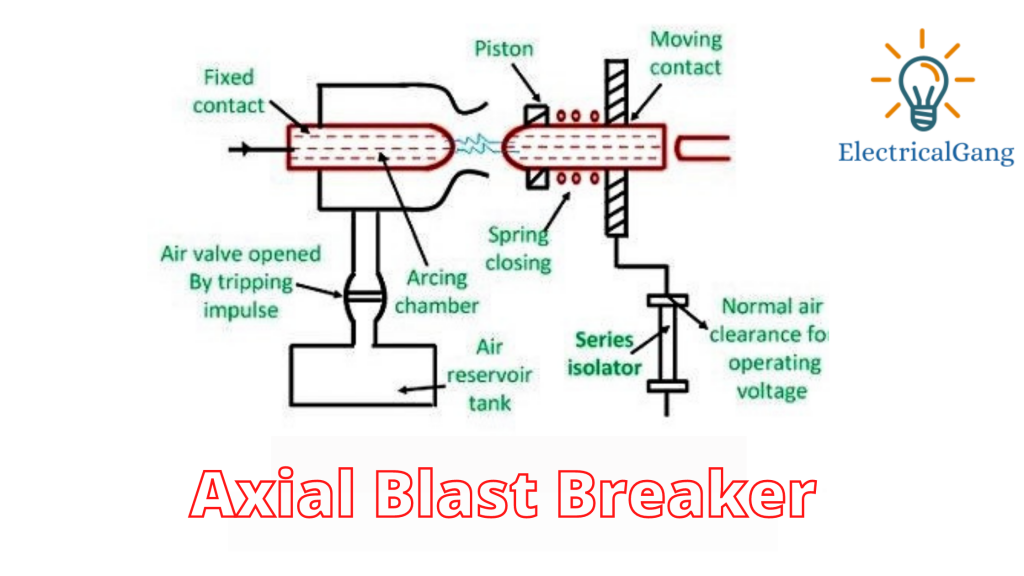
The moving contact of the axial blast breaker in the axial blast breaker will be in contact. The nozzle orifice is usually fixed in the closed condition in contact with the breaker. The fault occurs when high pressure is introduced into the room. The voltage is sufficient to sustain high-pressure air when the nozzle is flowing through the orifice.
Advantages of Air-Blast Circuit Beaker:
The benefits of Air-Blast Circuit Breaker are as follows:
- It is small in size.
- Free from the danger of fire.
- Less maintenance is required.
- The process of extinguishing a fire is very fast.
- The speed of the circuit breaker is much higher
Disadvantages of Air-Blast Circuit Breaker:
Just as there are advantages to this, there are also disadvantages as follows:
- Air has relatively low arc extinguishing properties.
- It has high-capacity air compressors.
- From the air pipe junction, there is a possibility of air pressure leakage.
- It needs extra maintenance.
Application and Uses of Air Circuit Breaker:
- Made for high and low current applications.
- It is used to protect machines such as plants, electrical machines, capacitors, transformers, and generators.
- The air circuit breaker is used in the power distribution system and the GND is about 15 kV.
Suggested Read: Difference Between Circuit Breaker and Isolator
#2. Vacuum Circuit Breaker:
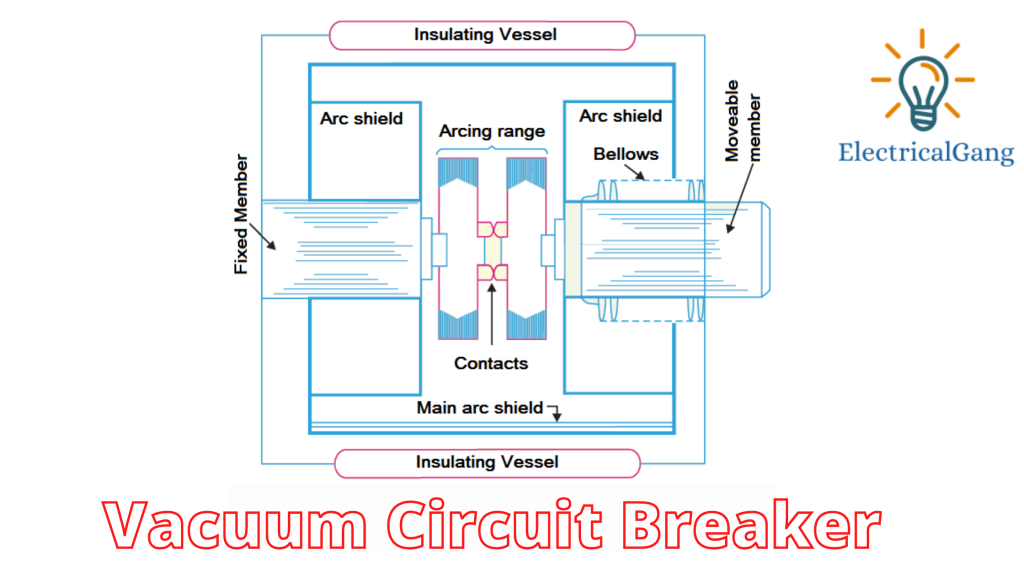
Vacuum Circuit Breaker uses a circuit in which a vacuum is used to destroy the arc. It has dielectric recovery retrieval, excellent interference, and can disrupt high-frequency currents that are superimposed on line frequency currents, resulting in arc instability. The vacuum circuit breaker has two contacts in the principle of operation known as electrodes. In normal conditions, these are closed.
Assume that for any reason a defect has arisen in the system, the coils in the circuit breaker are excited and the contacts are separated from each other. The ephemeral contacts are opened in a vacuum, i.e. an arc is created between the contacts by ionization of the metal vapor of 10-7 to 10-5 tor contacts.
Here the arc is quickly extinguished, this happens because the electrons, metal vapors, and ions generated during the arc condense rapidly on the surface of the CB contacts, resulting in rapid dielectric strength.
Advantages of Vacuum Circuit Breaker:
The benefits of a Vacuum Circuit Breaker are as follows:
- The risk of fire does not remain.
- No noise is generated during the operation.
- The Vacuum Circuit Breaker is reliably compact and has a long life.
- It requires less power to control operations.
- The dielectric power is very high
Suggested Read: What is Transformer Oil? | Properties of Transformer Oil | Types of Transformer Oil | Testing of Transformer Oil
#3. SF6 Circuit Breaker:
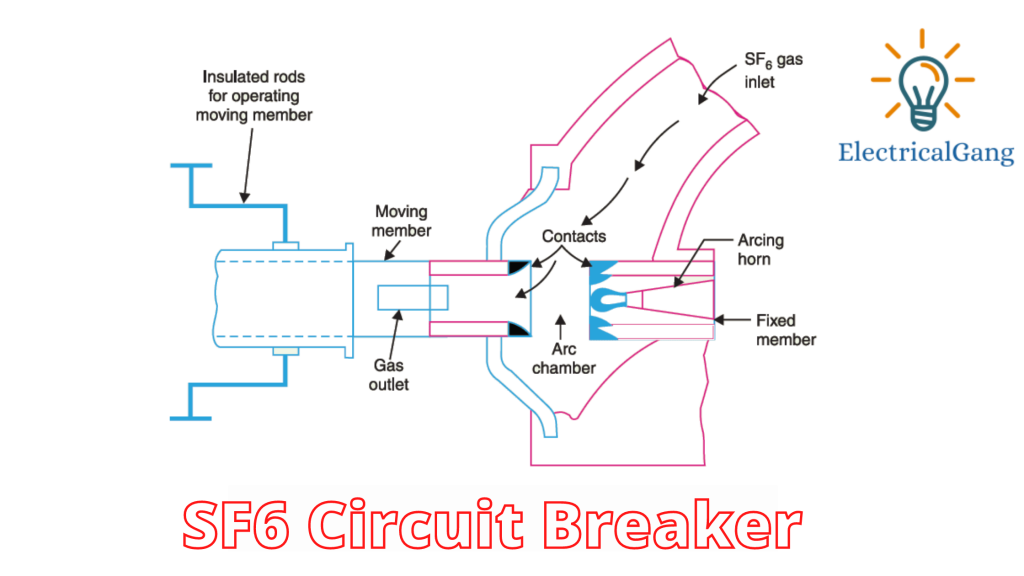
The SF6 Circuit Breaker uses SF6 under-pressure gas to extinguish the arc. This is known as the SF6 circuit breaker It has excellent insulating properties and high electro-negativity. A negative ion is formed when a free electron collides with an SF6 gas atom; It is absorbed by that gas molecule.
There are two ways of attaching electrons to SF6 gas molecules.
SF6 + e = SF6
SF6 + e = SF5- + F
The negative ions that form will weigh more than the free electrons. Therefore, the overall mobility of charged particles in SF6 gas is much lower when compared with other common gases. The mobility of charged particles is largely responsible for the conduction of current through the gas.
Therefore, heavier and less mobile charged particles in SF6 gas, it achieves very high dielectric strength. This gas has good heat transfer properties due to being vicious. It is used for medium and high voltage electrical power systems from 33 kV to 800 kV.
Types of Circuit Breakers in SF6:
The types of circuit breakers in SF6 are as follows:
- A single interrupter SF6 circuit breaker is applied up to 220.
- Two interrupters SF6 circuit breaker 400 are applied.
- Four interrupters are made up of the SF6 circuit breaker 715V.
Advantages of SF6 Circuit Breaker:
The advantages of the SF6 circuit breaker are as follows:
- Its effects are not affected by variations in atmospheric conditions.
- There is no reduction in dielectric strength as no carbon particles are formed during arcing.
- It requires less maintenance and does not require an expensive compressed air system.
- It gives soundless gives operation, and there is no over-voltage problem because the arc’s natural current is extinguished at zero.
Disadvantages of SF6 Circuit Breakers:
The disadvantages of SF6 circuit breakers are as follows:
- The interior needs to be cleaned periodically during maintenance in a clean and dry environment.
- Moisture in the SF6 breaker tank is very harmful to the breaker, and it causes many failures.
- Special facilities are required for transportation and maintenance of gas quality.
#4. Oil Circuit Breaker:
This circuit breaker uses high-quality mineral oil. It acts as a good insulating property in the proportion of air. In which both the moving contact and the fixed contact are completely immersed in the oil.
Read our article below to know more about this.
Suggested More: What is an Oil Circuit Breaker | Construction Of Oil Circuit Breaker
These devices critically monitor the functionality of the device. There are two types of standard circuit breakers: single-pole and double-pole.
Single-Pole Circuit Breakers:
- Mostly used in domestic applications.
- Safeguards and energetic wire.
- Delivers about 120 V voltage in this circuit.
- It has a current capacity of 15 amperes to 30 amperes.
Double-Pole Circuit Breakers:
- Mostly used in a wide range of applications such as heaters and AC.
- Protects two excited wires.
- This circuit delivers about 120 V/240 V voltage.
Most Commonly Asked Questions:

What are the 2 types of circuit breakers?
There are two types of standard circuit breakers, one is single-pole breakers and the other is double-pole breakers. This is a simple breaker that works to monitor the speed of lightning as it rotates in an indoor space.
What are the 3 circuit types?
Electric Circuit -Types of Electric Circuit
- Closed Circuit.
- Series Circuit.
- Parallel Circuit.
- Open Circuit.
- Short Circuit.
What are the four types of circuit breakers?
Circuit breakers are classified into four main types based on arc extinction as follows:
- Air brake circuit breaker.
- Airblast circuit breaker.
- Sulfur hexafluoride circuit breaker.
- Vacuum circuit breaker.
What are circuit breakers and types of breakers?
There are two types of circuit breakers available in the market depending on the voltage level. One of which is the low voltage circuit breaker which is used at voltages up to 1000V. The second is the high-voltage circuit breaker which is used at voltages above 1000V.
Like this post? Could you share it with your friends?
Suggested Read –
- What is CT PT Transformer
- Biometric Sensor | Types of Biometric Sensor
- TCL Roku TV Black Screen | Solutions That Work
- What is an Integrated Circuit (ICs)? | Types of Integrated Circuits
- What Is an Operating System (Os)? | Components of Operating System
Great blog, I am glad you come up sharing this article, the content is indeed informative and beneficial. I found this worth reading.